Related Research Articles

The Winter Garden Theatre is a Broadway theatre at 1634 Broadway in the Midtown Manhattan neighborhood of New York City. It opened in 1911 under designs by architect William Albert Swasey. The Winter Garden's current design dates to 1922, when it was completely remodeled by Herbert J. Krapp. Due to the size of its auditorium, stage, and backstage facilities, it is favored for large musical productions. It has 1,600 seats and is operated by The Shubert Organization. The auditorium interior is a New York City landmark.
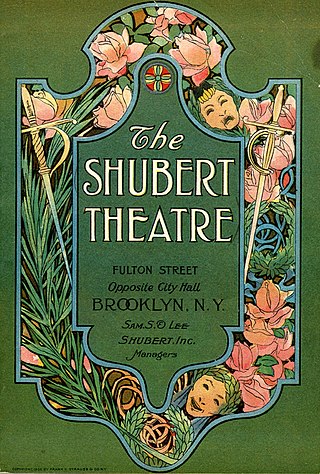
The Shubert Organization is a theatrical producing organization and a major owner of theatres based in Manhattan, New York City. It was founded by the three Shubert brothers in the late 19th century. They steadily expanded, owning many theaters in New York and across the United States. Since then it has gone through changes of ownership, but it is still a major theater chain.

The Imperial Theatre is a Broadway theater at 249 West 45th Street in the Theater District of Midtown Manhattan in New York City. Opened in 1923, the Imperial Theatre was designed by Herbert J. Krapp and was constructed for the Shubert brothers. It has 1,457 seats across two levels and is operated by The Shubert Organization. The auditorium interior is a New York City designated landmark.
Starting in 1896, the Theatrical Syndicate was an organization that in the United States that controlled the majority of bookings in the country's leading theatrical attractions. The six-man group was in charge of theatres and bookings. The Syndicates power would peak in 1907.

The Majestic Theatre is a Broadway theater at 245 West 44th Street in the Theater District of Midtown Manhattan in New York City. Opened in 1927, the theater was designed by Herbert J. Krapp in a Spanish style and was built for real-estate developer Irwin S. Chanin. It has 1,681 seats across two levels and is operated by The Shubert Organization. Both the facade and interior are New York City landmarks.

The Bernard B. Jacobs Theatre is a Broadway theater at 242 West 45th Street in the Theater District of Midtown Manhattan in New York City. Opened in 1927, the theater was designed by Herbert J. Krapp in a Spanish style and was built for real-estate developer Irwin S. Chanin. It has 1,100 seats across two levels and is operated by The Shubert Organization. Both the facade and the auditorium interior are New York City landmarks.

The Shubert Theatre is a Broadway theater at 225 West 44th Street in the Theater District of Midtown Manhattan in New York City. Opened in 1913, the theater was designed by Henry Beaumont Herts in the Italian Renaissance style and was built for the Shubert brothers. Lee and J. J. Shubert had named the theater in memory of their brother Sam S. Shubert, who died in an accident several years before the theater's opening. It has 1,502 seats across three levels and is operated by The Shubert Organization. The facade and interior are New York City landmarks.

The Walter Kerr Theatre, previously the Ritz Theatre, is a Broadway theater at 219 West 48th Street in the Theater District of Midtown Manhattan in New York City. The theater was designed by Herbert J. Krapp and was constructed for the Shubert brothers in 1921. The venue, renamed in 1990 after theatrical critic Walter Kerr, has 975 seats across three levels and is operated by Jujamcyn Theaters. The facade is plainly designed and is made of patterned brick. The auditorium contains Adam-style detailing, two balconies, and murals.

The Gerald Schoenfeld Theatre, formerly the Plymouth Theatre, is a Broadway theater at 236 West 45th Street in the Theater District of Midtown Manhattan in New York City. Opened in 1917, the theater was designed by Herbert J. Krapp and was built for the Shubert brothers. The Schoenfeld Theatre is named for Gerald Schoenfeld, longtime president of the Shubert Organization, which operates the theater. It has 1,079 seats across two levels. Both the facade and the auditorium interior are New York City landmarks.

The John Golden Theatre, formerly the Theatre Masque and Masque Theater, is a Broadway theater at 252 West 45th Street in the Theater District of Midtown Manhattan in New York City. Opened in 1927, the Golden Theatre was designed by Herbert J. Krapp in a Spanish style and was built for real-estate developer Irwin S. Chanin. It has 800 seats across two levels and is operated by the Shubert Organization. Both the facade and the auditorium interior are New York City landmarks.
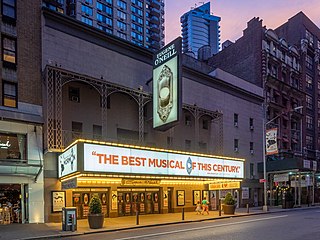
The Eugene O'Neill Theatre, previously the Forrest Theatre and the Coronet Theatre, is a Broadway theater at 230 West 49th Street in the Theater District of Midtown Manhattan in New York City. The theater was designed by Herbert J. Krapp and was constructed for the Shubert brothers. It opened in 1925 as part of a hotel and theater complex named after 19th-century tragedian Edwin Forrest. The modern theater, named in honor of American playwright Eugene O'Neill, has 1,108 seats across two levels and is operated by Jujamcyn Theaters. The auditorium interior is a New York City designated landmark.

The Belasco Theatre is a Broadway theater at 111 West 44th Street, between Seventh Avenue and Sixth Avenue, in the Theater District of Midtown Manhattan in New York City. Originally known as the Stuyvesant Theatre, it was built in 1907 and designed by architect George Keister for impresario David Belasco. The Belasco Theatre has 1,016 seats across three levels and has been operated by The Shubert Organization since 1948. Both the facade and interior of the theater are New York City landmarks.
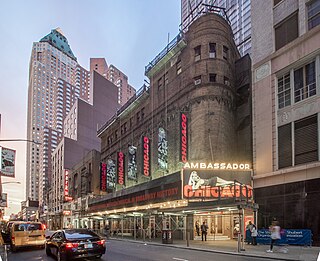
The Ambassador Theatre is a Broadway theater at 219 West 49th Street in the Theater District of Midtown Manhattan in New York City. Opened in 1921, the Ambassador Theatre was designed by Herbert J. Krapp and was constructed for the Shubert brothers. It has 1,125 seats across two levels and is operated by The Shubert Organization. The auditorium interior is a New York City designated landmark.
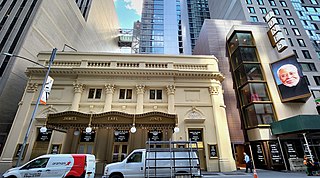
The James Earl Jones Theatre, originally the Cort Theatre, is a Broadway theater at 138 West 48th Street, between Seventh Avenue and Sixth Avenue, in the Theater District of Midtown Manhattan in New York City, United States. It was built in 1912 and designed by architect Thomas W. Lamb for impresario John Cort. An annex to the west of the theater, built between 2021 and 2022, was designed by Kostow Greenwood Architects. The Jones has 1,092 seats across three levels and is operated by the Shubert Organization. Both the facade and interior of the theater are New York City designated landmarks.

The Lyceum Theatre is a Broadway theater at 149 West 45th Street, between Seventh Avenue and Sixth Avenue, in the Theater District of Midtown Manhattan in New York City. Opened in 1903, the Lyceum Theatre is one of the oldest surviving Broadway venues, as well as the oldest continuously operating legitimate theater in New York City. The theater was designed by Herts & Tallant in the Beaux-Arts style and was built for impresario Daniel Frohman. It has 922 seats across three levels and is operated by The Shubert Organization. The facade became a New York City designated landmark in 1974, and the lobby and auditorium interiors were similarly designated in 1987.

Jujamcyn Theaters LLC, formerly the Jujamcyn Amusement Corporation, is a theatrical producing and theatre-ownership company in New York City. For many years Jujamcyn was owned by James H. Binger, former Chairman of Honeywell, and his wife, Virginia McKnight Binger. The organization is now held by its president, Jordan Roth, and president emeritus, Rocco Landesman.

New York City's Theater District, sometimes spelled Theatre District and officially zoned as the "Theater Subdistrict", is an area and neighborhood in Midtown Manhattan where most Broadway theaters are located, in addition to other theaters, movie theaters, restaurants, hotels, and other places of entertainment. It is bounded by West 40th Street on the south, West 54th Street on the north, Sixth Avenue on the east and Eighth Avenue on the west, and includes Times Square. The Great White Way is the name given to the section of Broadway which runs through the Theater District.
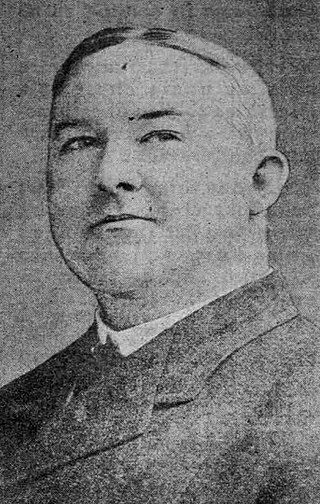
John Cort was an American impresario; his Cort Circuit was one of the first national theater circuits. Along with John Considine and Alexander Pantages, Cort was one of the Seattle-based entrepreneurs who parlayed their success in the years following the Klondike Gold Rush into an impact on America's national theater scene. While Considine and Pantages focused mainly on vaudeville, Cort focused on legitimate theater. At one time, he owned more legitimate theaters than anyone else in the United States, and he eventually became part of the New York theatrical establishment. His Cort Theatre remains a fixture of Broadway.


The Sam H. Harris Theatre, originally the Candler Theatre, was a theater within the Candler Building, at 226 West 42nd Street, in the Theater District of Midtown Manhattan in New York City. Opened in 1914, the 1,200-seat theater was designed by Thomas W. Lamb and built for Asa Griggs Candler, who leased it to George M. Cohan, Sam H. Harris, and George Kleine. Although the theater was intended to host both movies and legitimate Broadway productions, it functioned exclusively as a movie theater after 1933. The theater's auditorium was demolished by 1998. The only remnant of the former theater is its 42nd Street facade, which has been used by the Madame Tussauds New York museum since 2000.
References
- ↑ "THEATRICAL TRUCE IN THE NORTHWEST; Syndicate and the Independents Agree to Exchange Bookings of Attractions. CONFERENCES IN NEW YORK Theatre Owners' Body Must Meet Before Its Theatres Can Be Thrown Open Unreservedly". The New York Times. 1910-11-02. ISSN 0362-4331 . Retrieved 2023-05-23.
- ↑ George, Holly (2016-10-26). Show Town: Theater and Culture in the Pacific Northwest, 1890–1920. University of Oklahoma Press. ISBN 978-0-8061-5740-5.
- ↑ "1,200 THEATRES ARE INDEPENDENT NOW; Managers of South, West, and Northwest Circuits Form "Open-Door" Organization. HAVE $50,000,000 CAPITAL John Cort President of Body Whose Motto Is "Fair Play" – Shuberts Indorse the Movement". The New York Times. 1910-05-08. ISSN 0362-4331 . Retrieved 2023-05-23.